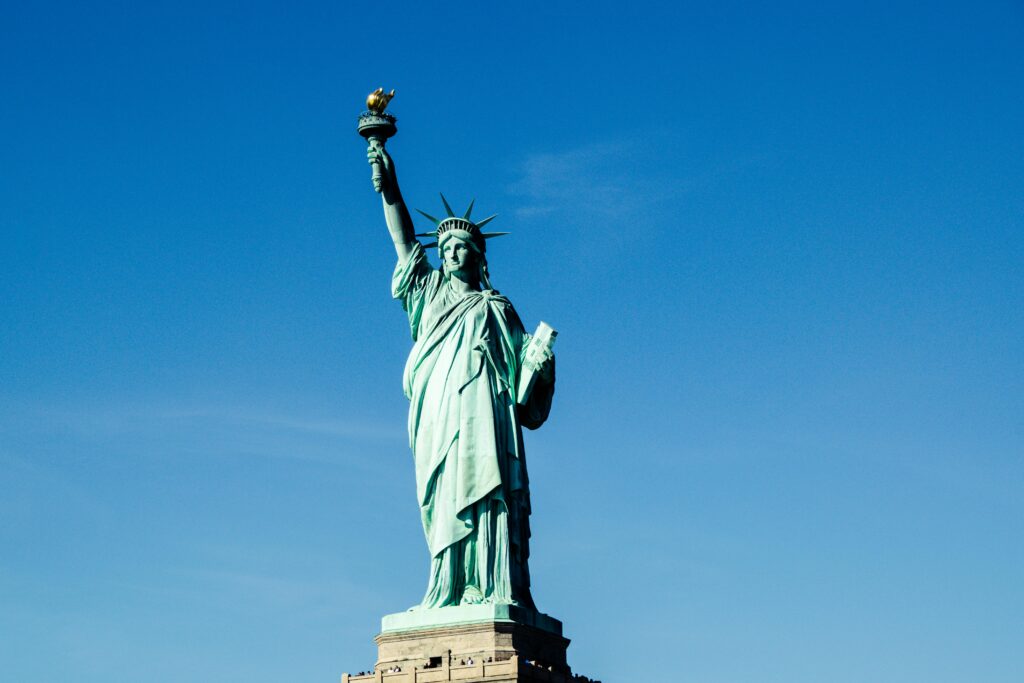Introduction: More Than Just a Monument
Towering 305 feet above New York Harbor, the Statue of Liberty is more than an architectural marvel. She is Lady Liberty, a beacon of hope, a symbol of democracy, and a lasting emblem of freedom and opportunity. For millions of immigrants sailing into America in the late 19th and early 20th centuries, her torch was the first glimpse of a new life.
Today, the Statue of Liberty continues to represent the values America holds dear — liberty, justice, and inclusion.
In this guide, we’ll explore her history, construction, symbolism, and how to visit this enduring icon of American freedom.
The Origins: A Gift from France
The Statue of Liberty was a gift from France to the United States in 1886 to commemorate the centennial of American independence and to symbolize the alliance between the two nations during the Revolutionary War.
It was conceived by French political thinker Édouard René de Laboulaye and designed by Frédéric Auguste Bartholdi, with the internal metal structure engineered by Gustave Eiffel — yes, the same man behind the Eiffel Tower.
France agreed to build the statue, while the U.S. was responsible for building the pedestal.
Despite enthusiasm for the project, funding was a challenge. Donations came from both wealthy elites and working-class citizens. Children donated coins. Newspapers held fundraisers. The effort united people from all walks of life.
Symbolism in Every Detail
Every element of the Statue of Liberty is filled with deep symbolic meaning:
- Torch: Enlightenment. The light that shows the way to freedom.
- Crown with 7 spikes: The seven continents and seven seas — liberty is universal.
- Tablet in her left hand: Inscribed with July 4, 1776 (American Independence Day).
- Broken shackles at her feet: Freedom from oppression and tyranny.
- Her stance: One foot forward, walking into a brighter future.
The statue’s full name is “Liberty Enlightening the World,” a fitting reflection of her global significance.
Construction and Journey to America
Bartholdi sculpted the statue in Paris, and it was assembled in pieces. Each part was shipped to the U.S. in crates in 1885 — 350 pieces packed into 214 crates, to be precise.
The statue was then reassembled on Bedloe’s Island (now Liberty Island), with the final unveiling taking place on October 28, 1886.
President Grover Cleveland dedicated the statue with the words:
“We will not forget that liberty has here made her home.”
The Role of Ellis Island and Immigration
From 1892 to 1954, Ellis Island, located nearby, served as the primary immigration processing center for the U.S. More than 12 million immigrants passed through its halls.
For these hopeful newcomers, the Statue of Liberty was the first sight of America, standing proudly at the harbor entrance. To them, she represented:
- Hope for a new beginning
- Freedom from religious or political persecution
- Opportunity to build a better life
Her presence offered silent reassurance that they had reached a land that promised liberty.
The Poem That Gave Her a Voice
The base of the Statue of Liberty features a bronze plaque with the poem “The New Colossus” by Emma Lazarus, written in 1883 to raise funds for the pedestal.
Her iconic lines gave the statue a distinct moral character:
“Give me your tired, your poor,
Your huddled masses yearning to breathe free…”
These words reframed Lady Liberty as a mother figure, welcoming the oppressed — not just a national monument, but a global symbol of refuge and compassion.
Restoration and Preservation
By the 1980s, the statue had begun to show signs of aging. In preparation for her centennial celebration in 1986, the U.S. launched a massive restoration project.
Key improvements included:
- Replacing the original torch with a 24k gold-leaf replica
- Rebuilding the internal iron framework
- Modernizing visitor access and safety systems
More than $100 million was raised privately, demonstrating just how cherished the statue is by Americans and people worldwide.
Visiting the Statue of Liberty Today
Lady Liberty stands proudly on Liberty Island, accessible only by ferry from Battery Park in Manhattan or Liberty State Park in New Jersey.
What You Can Do:
- Visit the pedestal: Includes a museum on the statue’s history
- Climb to the crown: Requires a reservation but offers panoramic views
- Walk the grounds: Scenic views of Manhattan and Ellis Island
- Tour the museum: Opened in 2019, includes immersive exhibits
Tips for Visiting:
- Book tickets in advance, especially crown access
- Go early in the morning to avoid long lines
- Bring ID and go through security
- Combine your visit with Ellis Island for a full historical experience
Cultural Impact and Global Recognition
The Statue of Liberty is more than just a tourist destination. It has become a powerful icon of democracy, immigration, and human rights.
She’s appeared in:
- Countless movies and TV shows (from Planet of the Apes to X-Men)
- Political speeches and protest signs
- Replicas in more than 30 countries, including France, Japan, and Brazil
The statue’s influence extends far beyond New York — she is a universal symbol that transcends borders.
Why the Statue Still Matters
In an age of polarization, economic inequality, and migration crises, the Statue of Liberty’s message remains more relevant than ever.
She reminds us:
- That freedom is not free — it must be protected
- That nations built on diversity can thrive
- That welcoming others enriches us all
In 2024 and beyond, as the world faces new challenges, Lady Liberty stands tall — not just as a figure of stone and copper, but as a moral compass.
Conclusion: Eternal Flame of Freedom
The Statue of Liberty is not just a monument. She is a promise. A promise that freedom, equality, and hope still matter.
From her humble beginnings as a diplomatic gesture to her place as one of the most recognized symbols in the world, she represents what America aspires to be — a land that offers liberty and justice for all.
When you stand beneath her torch and gaze up, you’re not just looking at a statue. You’re looking into the soul of a nation.



